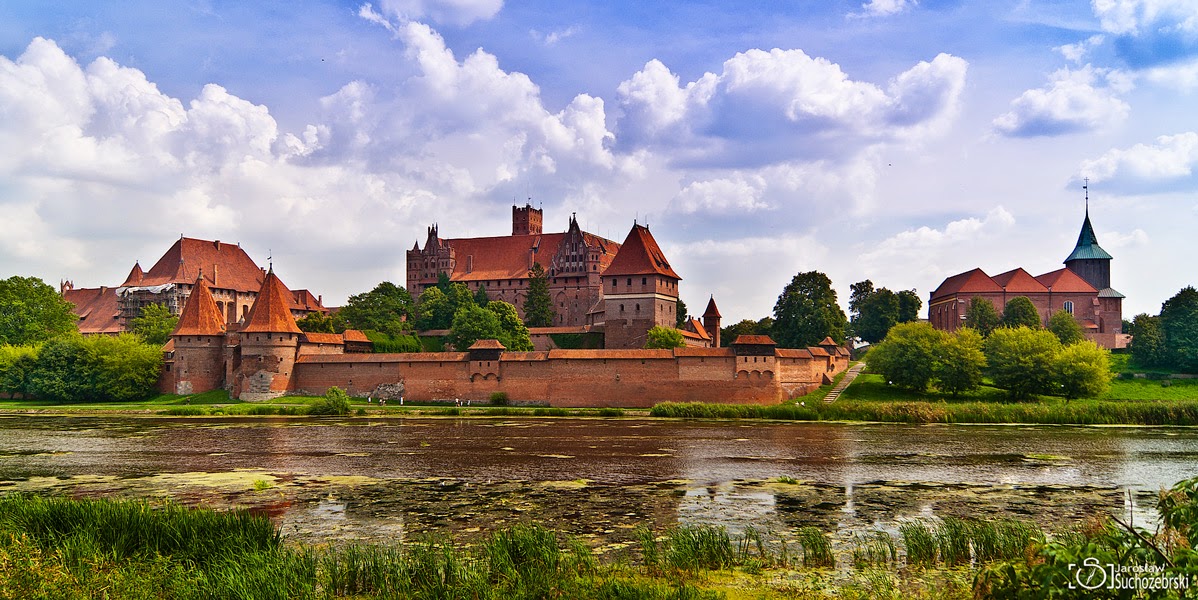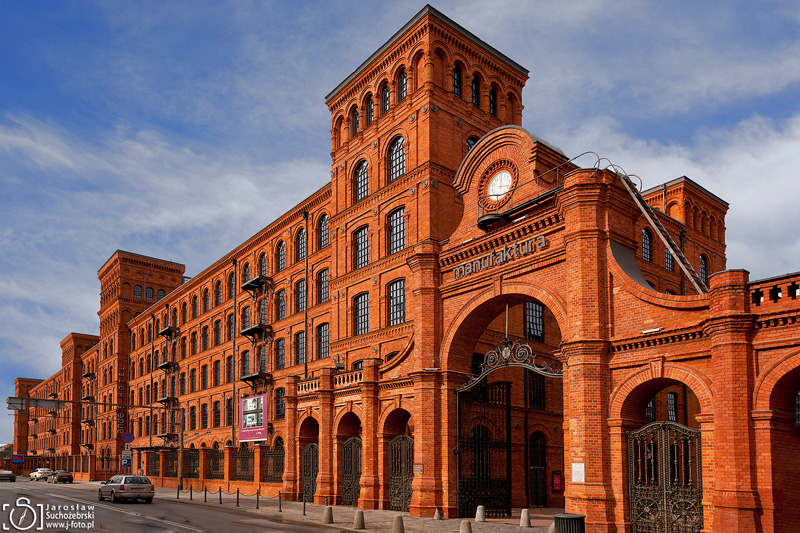Supraśl Lavra - important site of Orthodox culture in Poland
The Monastery of the Annunciation in Supraśl (aka the Supraśl Lavra) is one of six Eastern Orthodox monasteries for males in Poland. The Monastery was founded in the 16th century. With the passing of the years, the Supraśl Lavra became an important site of Orthodox culture in the Kingdom of Poland. In 1609 the Basilian Order took over the administration of Monastery. The Basilians oversaw the rebuilding of the Monastery complex and expansion of its publishing activity. Over a period of slightly more than one hundred years, published 350 titles in Ruthenian, Polish, and Latin. In 1796, Prussian authorities confiscated the holdings of the monastery after the third Partition of Poland.
In 1807 Supraśl fell under Russian rule and the Russians gave the monastery complex to the Russian Orthodox Church. In 1875, the St. Panteleimon church was built, in 1889, St. John the Theologian, and finally in 1901, St. George the Victor. In 1910, there was a restoration of the 16th-century frescoes, which had been covered up by the Basilians. In the aftermath of the havoc of World War I, the monks fled from the monastery for the interior of Russia, taking with them the miraculous icon of Our Lady of Supraśl.
In the period between the two world wars, the monastery was used by the Latin Rite Salesian Order. During the second world war in 1944, the retreating German army destroyed the Church of the Annunciation, along with all of its precious frescoes. After the war, the Communist government turned the monastery into an agricultural academy. After the collapse of the Communism in Poland, the monastery was turned over to the Polish Autocephalous Orthodox Church, which immediately began the still ongoing conservation work and renovation of the monastery.
Supraśl Lavra is an important site of Slavic culture and history in the Eastern lands of Poland. The Codex of Supraśl, the oldest Slavic literary work in Poland and one of the oldest of its kind in the world, is named after this monastery (source: Wikipedia).
You can read articles about Podlasie region:



























Wonderful captures of this beautiful monastery.
ReplyDeleteThanks for including its history.
Beautiful church and skies.
ReplyDeleteSydney – City and Suburbs
That is a gorgeous mum astray and it is wonderful to see it in the different lighting conditions
ReplyDeleteGreat photos & what a beautiful Monastry. I really like the black curvy spires
ReplyDeleteWhat gorgeous shots and buildings.
ReplyDeleteSuch differing images of a lovely building.
ReplyDeleteVisit Keith's Ramblings
You have captured the most beautiful backlighting for these shots.
ReplyDeletehandsome!
ReplyDeleteA series of gorgeous images, worthy of the magnificent beauty of this great monastery.
ReplyDeleteSo sad that it had to suffer through two regimes, but it looks as if it has finally reached a stage of peace and hopefully prosperity for the future.
Wow, awesome shots. I love the monastery and the town.
ReplyDeleteWorth a Thousand Words
Kudos for this stunning collection of images. Interesting how well the vertical format worked...the two are my favorites.
ReplyDeleteGreat photos but even better is the story of the monastery. What an eventful history and amazing that it has survived all this time.
ReplyDeleteThat architecture is gorgeous. Personally, I have never seen something like that (have to travel more). The different angles you used helped me to get a better understanding of the place.
ReplyDeletewow that is one massive church, thanks for the information, was interesting to read that :-)
ReplyDeletePięknie pokazane miejsce :) pozdrawiamy
ReplyDeleteSuch a beautiful monastery in a glorious setting.
ReplyDeletePIĘKNE, PIĘKNE, PIĘKNE!!!!!!
ReplyDeleteSERDECZNIE POZDRAWIAM:)
Witaj Jarku!
ReplyDeletePrzepiękne są twoje zdjęcia. Oddają unikatowy klimat podlaskich krajobrazów.
Pozdrawiam:)*
What a beautiful and majestic building, and how cool how you got a photo of it st all diffrent times and places, Clio lending a helping hand for Coombe Mill
ReplyDeleteI came here from inSPIREd Sunday but I've already visited & commente previously. Thought I'd leave you another comment anyways.
ReplyDeleteHope you're having a great weekend
Lovely images of a beautiful church.
ReplyDeletewow wee, your work is just magnificent. well done. ( ;
ReplyDeleteThank you for the beautiful photos and the story. The monastery had tough times under the Nazis and then the Communists. I'm glad it is alive again and being restored to its full beauty.
ReplyDeleteInteresting, I never think about monasteries being for males or females. Lovely photos of a beautiful location. So white.
ReplyDeleteLooks a nice place that deserves restoring
ReplyDeleteWonderful presentation. I feel as though I was taking the tour with you.
ReplyDeleteWow, this monastary is really beautiful. The history is very interesting, The last shot with the deep blue sky is stunning.
ReplyDeleteHappy Blue Monday.
Jeanne
wow the sky looks lovely... gorgeous captures :D
ReplyDeleteTwinkle Eyed Traveller
What gorgeous architecture!
ReplyDeleteamazing place and photos. I wouldn't expect an Orthodox church in Poland (except if it was under Russian influence?). worth visiting.
ReplyDeleteWhat a beautiful church!
ReplyDeleteThank you for sharing at https://image-in-ing.blogspot.com/2016/06/west-side-story.html
what a gloriously beautiful building. and so much history to it. i love all the photos. they are very beautiful.
ReplyDeleteThank you for taking part in the Saturday Silhouettes meme.
ReplyDeleteMMMMM wow, I am really enjoying ALL of these shots. The light in them is incredible.
ReplyDeleteLisa @ Life Thru the Lens
Great photos!
ReplyDeleteThanks for taking part in the Travel Tuesday meme. I look forward to your next contribution!
Te ujęcia monastyru są cudowne. Szczególnie mnie ujęło foto nr 4 i 5. Absolutnie oddają klimat wieczorów nad rzeką. Piękności, po prostu miód cud i maliny... Pozdrawiam z Podlasia
ReplyDelete